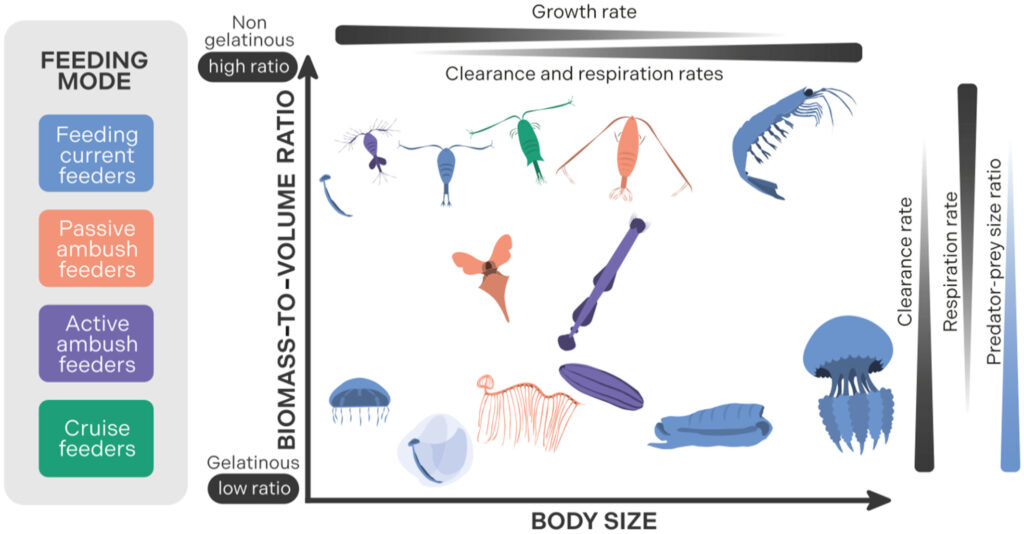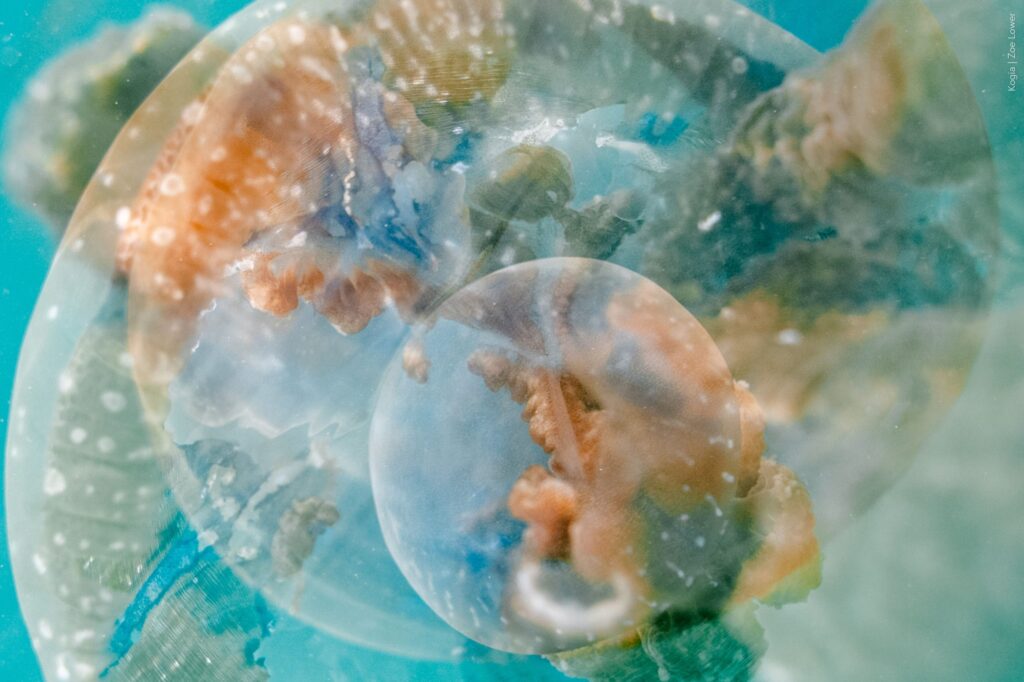The challenge: simplified models, complex oceans
BGC models simulate the complex interactions between chemical elements and biological processes within the ocean, providing essential insights into how the marine environment influences and responds to environmental and climatic change.
“Take the marine carbon cycle as an example,” explains Julie Lemoine, BIOcean5D PhD student at the Villefranche Oceanography Laboratory (LOV). “BGC models can represent how carbon dioxide is absorbed from the atmosphere, transformed through biological processes such as photosynthesis and subsequently transported and stored in the deep ocean.”
The extreme complexity of the ocean means that a typical marine BGC model includes several interlinked components – such as phytoplankton, zooplankton, nutrients, dissolved gases and chemical tracers. To remain computationally feasible, only the most influential processes are typically included. “Most BGC models, for instance, represent only a single type of mesozooplankton, usually copepods,” explains Fabien Lombard, associate professor at Sorbonne University and based at LOV. While this simplification is computationally rational, it introduces uncertainty in predicting key biological variables and ecosystem dynamics.
A trait-based solution
To improve zooplankton representation – better capturing their diversity and complex interactions – new theoretical frameworks are being developed to enhance the accuracy and realism of ocean simulations. “Typically, BGC models classify plankton into functional types, grouping species by ecological role (e.g. action on carbon flux or other biogeochemical elements such as nitrogen or silicon),” explains Fabien. “Each group, however, requires new parameters (e.g. growth, reproduction, feeding), increasing both model complexity and uncertainty. A promising alternative is the functional trait-based approach, which uses measurable properties, such as body size, to capture a broader range of diversity while reducing the number of parameters required.”
Indeed, body size has long been considered the primary ‘master trait’ in ecological research as it influences nearly every aspect of an organism’s capacity to survive, including growth, reproduction, feeding and survival. Body size alone, however, cannot fully capture zooplankton diversity. In the article recently published in Limnology and Oceanography, Julie, Fabien and their co-authors therefore propose the biomass-to-volume ratio as an additional master trait that, together with body size, better represents zooplankton functional diversity.
 Trade-offs between size, gelatinousness (represented by biomass-to-volume ratio) and physiological rates. Credit: Reproduced from Julie Lemoine et al., Limnology and Oceanography, September 2025, doi: 10.1002/lno.70171
Trade-offs between size, gelatinousness (represented by biomass-to-volume ratio) and physiological rates. Credit: Reproduced from Julie Lemoine et al., Limnology and Oceanography, September 2025, doi: 10.1002/lno.70171
“The biomass-to-volume ratio reflects an organism’s carbon content and distinguishes between gelatinous and non-gelatinous plankton,” explains Julie. “Incorporating gelatinous zooplankton, such as jellyfish, into BGC models allows for inclusion of their significant yet often overlooked role in marine BGC cycles. For example, studies show these organisms can transfer particulate organic carbon to the deep ocean up to five times more efficiently than non-gelatinous organisms such as copepods.” Enhancing BGC models in this way can therefore substantially improve the accuracy of ocean carbon sequestration simulations.
Building a FAIR and open dataset
To evaluate this framework, the team compiled a coherent dataset from more than 90 sources – a long and meticulous process! “We collected data from scientific publications, ranging from directly available datasets to those requiring specialised tools to extract data from figures,” Julie explains. Considerable effort was then needed to harmonise measurements taken under varying conditions and units to ensure consistency and comparability.
This process highlights the challenge of reusing scientific information effectively. The finalised dataset has been made openly available, promoting FAIR (Findable, Accessible, Interoperable and Reusable) principles and supporting transparent, collaborative and reproducible ocean research.
 Credit: Kogia | Zoe Lower
Credit: Kogia | Zoe Lower
Multidisciplinarity and collaboration
The project illustrates how multidisciplinarity and collaboration drive advances in ocean science. “Before starting this PhD, I completed a Master’s in Marine Sciences at Sorbonne University, which gave me a broad understanding of the major challenges facing marine environments,” says Julie. “During this project, I’ve worked closely with Fabien Lombard and benefitted from his expertise in observational and experimental data.”
The BIOcean5D network has also been instrumental in facilitating collaboration and the exchange of expertise. “Presenting results at the annual General Assembly meetings provided the opportunity to receive valuable feedback from experts across disciplines,” says Julie. “Collaboration with Ken H. Andersen at DTU Aqua allowed the integration of gelatinous zooplankton into a size-structured model developed by his team, while a physiological trait-based model I’ve developed was used to explore how different zooplankton groups contribute to global carbon budgets using data from the Tara Ocean Foundation.”
Looking ahead
The results obtained underscore the importance of considering functional groups beyond copepods and confirm that size and biomass-to-volume ratio are the two most important parameters for representing the full diversity of zooplankton.
“This multidisciplinary work has allowed me to connect complementary perspectives, linking empirical findings with theoretical frameworks to better understand plankton ecosystems,” concludes Julie. “I hope to continue working at this interface between marine ecology, modelling and data science to better understand our ocean.”